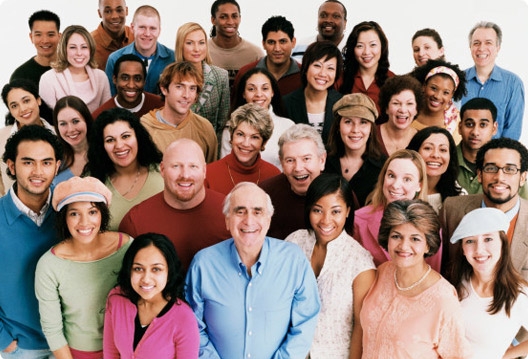If we take a look around us, there are many things to see, including people. Every day, we see people in our neighborhood, across the street and practically anywhere where there are human establishments. We may be so busy sometimes that we fail to take notice of the people around our town, at the mall, in church, and at the street or at any social event. And if we do pay attention, what do we notice? One thing that we may notice is that the people we see come in different colors. We look at our own skin and tend to compare it with the other people we see around us. We have that natural tendency to look for people who share our affinity, especially in skin color.
People have noticed long ago that persons from different parts of the world often had different skin colors. They have different languages, features and cultures. In our struggle to understand these differences among different people, language has become an essential element. The words and phrases we use to describe and address each other reflects the progress we have made towards a world where everyone is accepted, recognized and respected.
We have come far down the road of global understanding and unity by improving our ways of referring to other people of different skin color or ethnicity than ours. We have moved on from using negroes, niggers, gringos, chinks among other racial slurs, to the use of “colored people,” “ethnic minorities” and “people of color” An internet research and survey on the usage of the three less racially charged words “colored people” “minorities” and “people of color” gave interesting results. The usage of “colored people” peaked in books published in 1970. The term “minorities,” peaked in usage on 1997. The use of “people of color” reached its apex in 2003 after the steady decline of “minorities”. Today, we see a resurgence of these words as the issue of racial discrimination becomes a pressing issue in the United States. “People of color” once again emerged to widespread use as a race-sensitive term when referring to people of different skin color, race or ethnicity. Although the politically correct term should be “ethnicity” when referring to different races, cultures and societal groups, the use of “people of color” emerged as the most sensitive-sounding term when referring to other race groups, as accepted by majority of the ethnic groups in the United States.
Let’s consider the evolution of the widely used phrase, “people of color” or “person of color”. Actually, it is not a relatively new term. A quick research into the etymology of this phrase gave results that this term was used as early as the late eighteenth century to the early nineteenth century. The Oxford English Dictionary’s earliest reference is from the French gens (or hommes) de couleur, in the late 18th century.
Before, “Person of color” was a phrase used to refer the African Americans only. It has grown to become a useful term because defining someone of different race or ethnicity by a negative prefix — nonwhite or other than white — just seems ridiculous. But for some white folks, they also object to the phrase too because they think they also do have color. Today, the term “people of color” or “person of color” usually covers all/any peoples of African, Latino/Hispanic, Native American, Asian or Pacific Island descent, with the intent of the phrase of being all-inclusive.
Image Source:
http://neffmc.org


Recent Comments